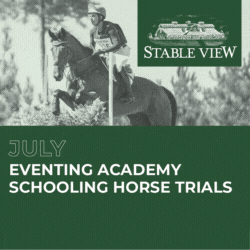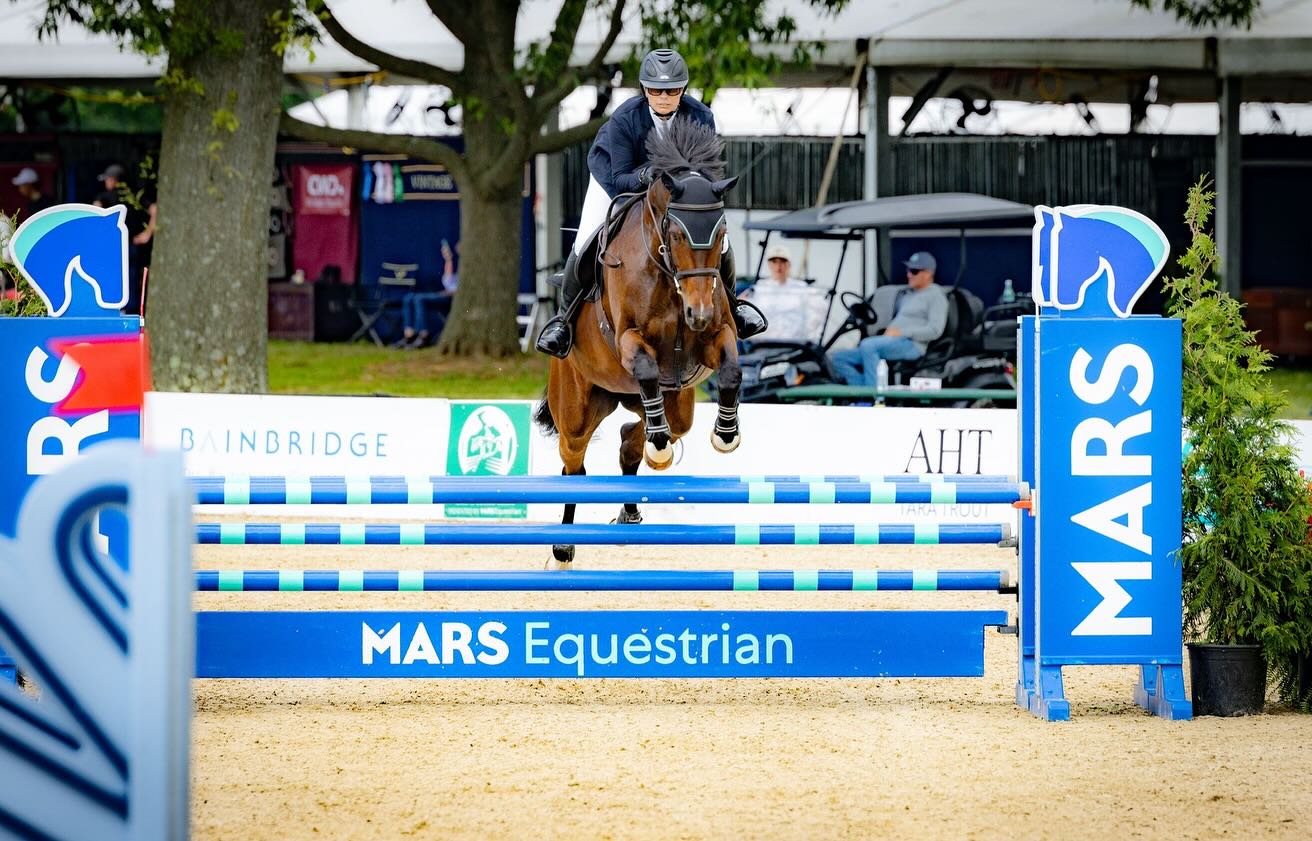
Photo by Tilly Berendt.
At the MARS Maryland 5 Star this year, there were 23 horses entered in the CCI5* division. Of those, 8 were ridden by riders from outside of North America. Only 15 5* entrants—or about 65%—were ridden by riders from the U.S. and Canada.
By contrast, at Les 5 Ètoiles de Pau in France, which ran the week after Maryland, there were over 80 horses entered. A number of the entries were from France and other European countries. A couple of them were American.
Aside from the Adelaide 5*, which tends to have a small field by the nature of the relatively small number of high performance riders in the Antipodean countries of Australia and New Zealand, as well as the logistically difficult and expensive nightmare of shipping a foreign horse to compete there, there is no other 5* in the world that has had fewer than 25 entries in the past decade. What’s more, the other North American 5* this year, the Defender Kentucky Three-Day Event, had just 26 entries. And again, just 13 of those 26 were ridden by North Americans – only 50%.
Why is it that we have two of the best 5* events in the world, but so few horses to compete at them? Where are the North American 5* horses? And, perhaps more importantly, where are the riders?
It’s possible that this year was a bit of an outlier.
It was an Olympic year, after all, so many North American top horse and rider pairs were competing heavily this spring to vie for an Olympic team spot. But still, usually the horses that don’t get the team call-up then head to a fall 5* with the aim of a competitive finish; Sinead Maynard did just that in 2012 when she finished runner-up at Burghley with Manoir de Carneville.

Buck Davidson and Sorocaima represent the U.S. at the 2024 MARS Maryland 5 Star. Photo by Shannon Brinkman Photography.
It’s also possible to say that Maryland 5 Star is just getting off the ground, since it is a new event, and a new CCI5*, which might account for the low entry numbers. However, 2024 was Maryland’s fourth year running, so it’s not exactly true that riders did not have notice that the event was coming. Furthermore, the Fair Hill Three-Day Event, which used to run on exactly the same weekend in October as Maryland now does, included a class at the CCI4*-L level which generally had upwards of 40 or 50 entrants in most years. Those same horses were often 5* competitors who had done Kentucky, or would do Kentucky the following year.
This year likely wasn’t an outlier. So is the problem deeper? Are we going to have a pattern of low entries at our North American 5* events? Where is North America’s up-and-coming talent?
There are a few potential explanations that I’ve come up with, but I’d love to hear thoughts from others as well.
First, every country has its ebbs and flows of top-level athletes. Perhaps the U.S. and Canada are simply experiencing one of those troughs. Some countries will find themselves with a deep bench of horses and riders in championships years, such that they can be incredibly selective (and therefore very competitive). Those same countries may have a lighter potential team roster in other years, just by virtue of some riders and horses retiring.
Second, the production of riders and horses in this region really seems to top out at the 2* and 3* level. We have a pyramid shape to our sport, and for some reason in North America, the top 10% of the pyramid is incredibly small. I have a hunch that this lack of production to the top level is due, in part, to horse selection. The type of horse that can give someone experience at the 5* level may not be the same horse that wins at the 2* and 3* level. In fact, it may not win at any level! But gaining experience precedes becoming competitive. My opinion is that it’s more important to go and complete a 5* -— or maybe three or four or five 5*s -— than it is to try to win one right off the bat.

Young and Developing Horse pathways are an integral part of increasing upper-level numbers. Photo by Tina Fitch Photography.
I make this point because I think our sport has become so competitive that people believe they must have a horse that will win on the flat and show jump clear every time in order to pursue the upper levels. But here’s the thing—looking for that horse is very difficult, because often they aren’t for sale, or if you do find one that’s super competitive in the dressage and show jumping, it is more likely to be a horse with not enough blood for top level eventing. The correlation is fairly clear that a more Thoroughbred-type horse tends to have the natural ability to gallop around a five-star compared to a more Warmblood-type horse, although there are obviously many exceptions and variations.
Sometimes I meet people -— either fellow competitors, or folks I teach in clinics -— who are so intent on being competitive in all three phases that their drive to win ultimately becomes their detriment. The biggest challenge of the 5* level is the cross country test. Thus, we should be looking for amazing cross country horses, first and foremost, particularly for up and coming riders. I see lots of people who have competitive 3* horses that likely won’t make it to 5*. And that’s okay. But if those riders have the goal of being on teams and being great cross country riders, they have to gain 5* experience.
Third, there are not enough good young horse producers creating a pipeline of 5* horses here. Somehow, at some point, the horses with the talent to make it to the top are falling off the map, or maybe not even making it onto the map in the first place.
We need a better system of cultivating equine talent, whether it be through providing more incentives or having more structure to young horse development programs. For instance, we have the USEA Young Event Horse (YEH) competitions and other programs such as the U.S. Event Horse Futurity and the 6- and 7-year-old Developing Horse pathway via USEF. But perhaps we should also have YEH clinics, where riders are educated about how to produce a young horse with a big future in mind.
Ideally, the riders producing these horses from the beginning should also be the riders who ride them up to that top level, because having a strong relationship with your horse is one of the most important parts of getting to the 5* level. I have felt this to be true with both of my 5* horses so far in my career, and it’s why I will continue to hunt for the best young horses and aim to bring them along in my own program, with my own training philosophy, so they can be very much my own horses to ride when they eventually -— hopefully! -— get to the top.

Lauren Nicholson and Vermiculus won USEF National 5* Champion honors with their 5th place finish at the 2024 Defender Kentucky Three-Day Event. Photo by Tilly Berendt.
The thing is, we have incredible events in North America. We have had amazing investment in two world-class 5* events at Kentucky and Maryland. The addition of Maryland 5 Star has meant that you can produce a horse to 5* level, in some respects, more easily, because if the timing is right, you can do a 4*-L with a horse in the spring, and a 5* in the fall, whereas before you would have had to wait until the following year for that 5* debut. But we aren’t taking advantage of these amazing opportunities because we don’t have the pipeline of horses and riders coming through.
So where are these 5* horses and riders? Are they in some barn in the Midwest, off the beaten path but brimming with talent? Are they horses that have the potential to go all the way, but have been sold to fund a rider’s business? Are they riders who have the talent and drive to get after the big goals, but not the support or coaching to get there?
Where is the missing link? The proof is in the pudding. When Tamie Smith won Kentucky with Mai Baum in 2023, I thought the momentum in this sport in North America would take off. We haven’t seen that happen yet, but perhaps with some more initiatives, a different mindset, and some planning, we can fill those 5* entry rosters with many more pairs from North America in the years to come.



















